It is common to see solar panel systems mounted on commercial rooftops because of the financial and environmental advantages of mounting them there versus somewhere else on the building or property. It’s not always the best decision though.
Here are five questions building owners and property managers should ask and have answered before deciding to move forward with a commercial flat roof solar panel installation. Learn more below.
Considerations
Essentially, you’re going to need to investigate whether the building is suitable for a solar panel installation. To do that, you’ll need to consider the building structure and location, estimate one-time and ongoing costs, the age of your existing roof, and the ease and cost of ongoing roof maintenance.
Given the range of considerations, you should consult with several different specialists including, as a minimum, one or more solar panel installers, engineers, accountants, and/or commercial flat roofing specialists.
A good place to start is with a solar panel installer. Most solar panel installers should be able to tell you if there is any immediate or obvious reason why solar panels cannot, or should not, be installed on your roof. If there is not, then we recommend asking the following questions based on our years of experience working with and around solar panels.
1. How Are Rooftop Solar Panels Installed?

Generally, solar panels just sit on stands on the rooftop. Sometimes they are fastened to the roof deck with mounting plate brackets, but that is less common because of wind uplift.
2. Will Solar Panels Overburden My Roof Structure?
This is a great question for a building engineer. You will want to make sure that an engineer signs off on the added weight of solar panels before investing. Any financial benefit from the panels would be canceled if it caused your roof to fail.
We have had one customer who decided not to install solar panels after he was advised that they would overburden the roof structure.
3. What Does a Solar Panel Installation Cost?
This is a two-part question, what does it cost to install solar panels and what does it cost to remove and dispose of them.
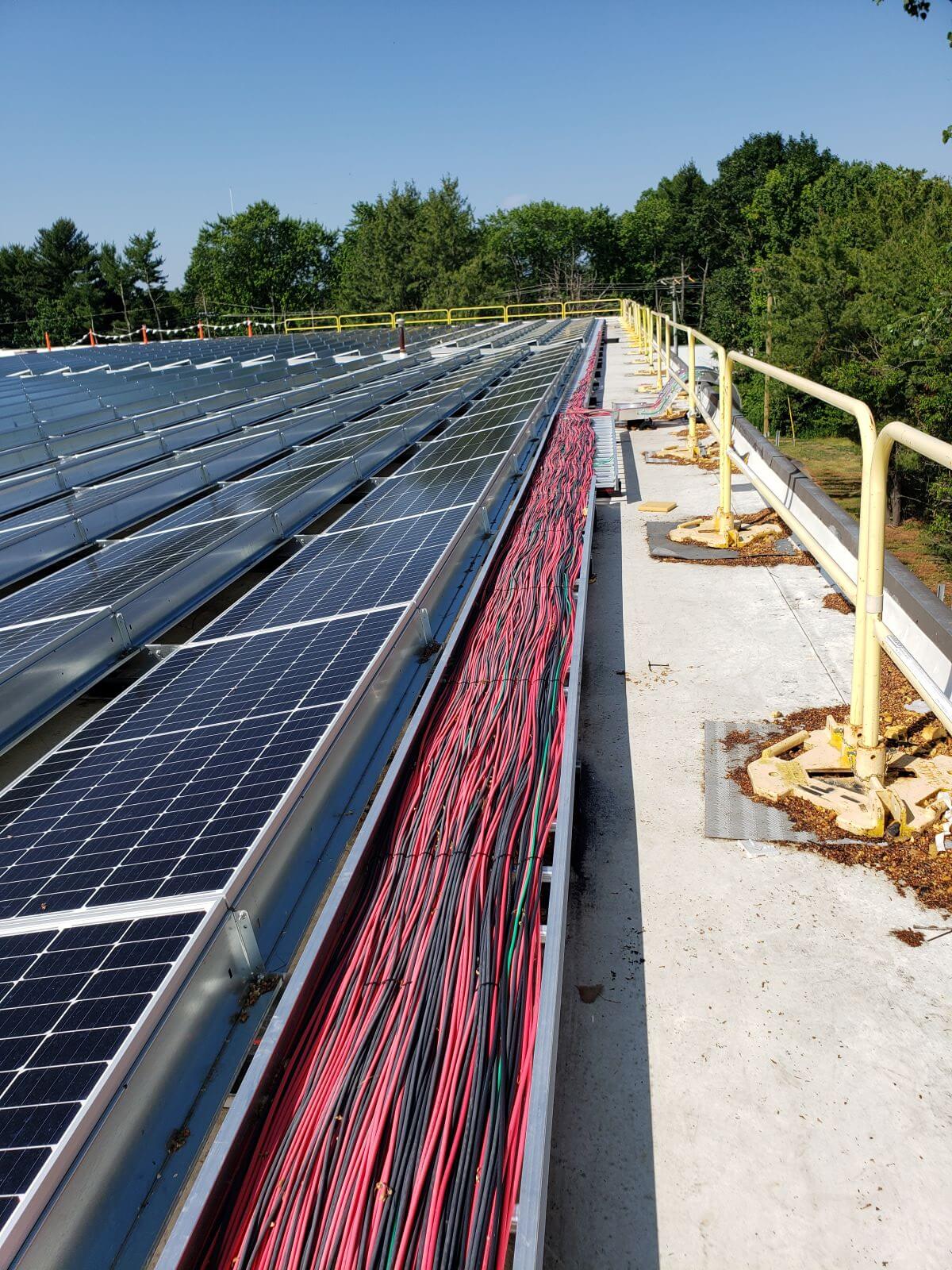
Solar panel installers will give you an idea of how much it will cost to have solar panels installed on your flat roof. In our experience, customers who added solar panels to their buildings typically had no out-of-pocket expense associated with it. That’s because there are major tax incentives in some locales that can offset the cost of the solar panel project. We have not had any customers who installed panels without this incentive.
In terms of solar panel removal and disposal, we have asked every customer who is about to, or has already installed solar panels whether the cost to remove and dispose of the solar panel was included in their return on investment calculations. Surprisingly, we have never received an answer.
The idea is this, you have been presented with an investment opportunity to put these panels on your building and save energy. If you have to upgrade your roof to accommodate the panels, you may have a major out-of-pocket cost. But what happens at the end of the panels’ life cycle? It is worthless now, essentially trash on your building; the kind of trash that can’t just be thrown in a dumpster.
Just like you can’t throw a refrigerator or old tube TV in a dumpster, the panels on your rooftop contain materials that are not suitable for a normal landfill. So you will have to identify solar panel disposal and/or recycling options for your locale and that costs time and money.

This brings us back to our original question, “Is the cost to remove and dispose of solar panels at the end of their life cycle included in the ROI calculation?”. Our guess is “no”.
The economics of adding solar panels to your rooftop probably doesn’t make sense without a government program footing the bill. If you include a ballpark estimate for solar panel removal and disposal, the numbers might make even less sense. Check with a solar panel installer to be sure.
4. What Is the Best Roof Age For a Solar Panel Installation?
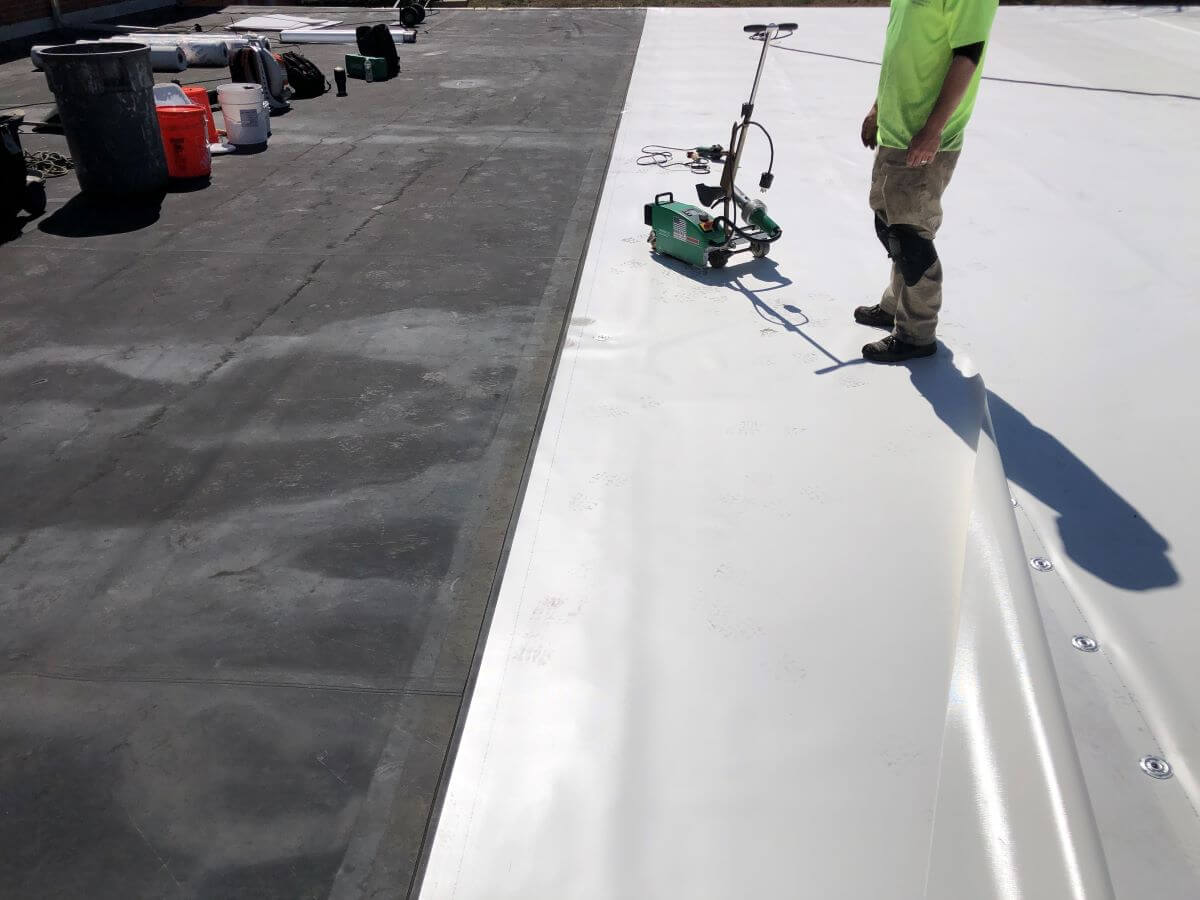
Typically, solar companies recommend the existing roof be warranted for 20 to 25 years. This is because 20-25 years is the expected lifespan of a solar panel.
If your roof is already 15 years old and it has an expected life of 20 years, it doesn’t make sense to install panels that will just have to be removed in 5 years. Knowing that your flat roof is going to continue to wear down under the panels, the cost to remove and reinstall the panels would probably mitigate any potential energy savings.
5. Will Solar Panels Impede Roof Maintenance?
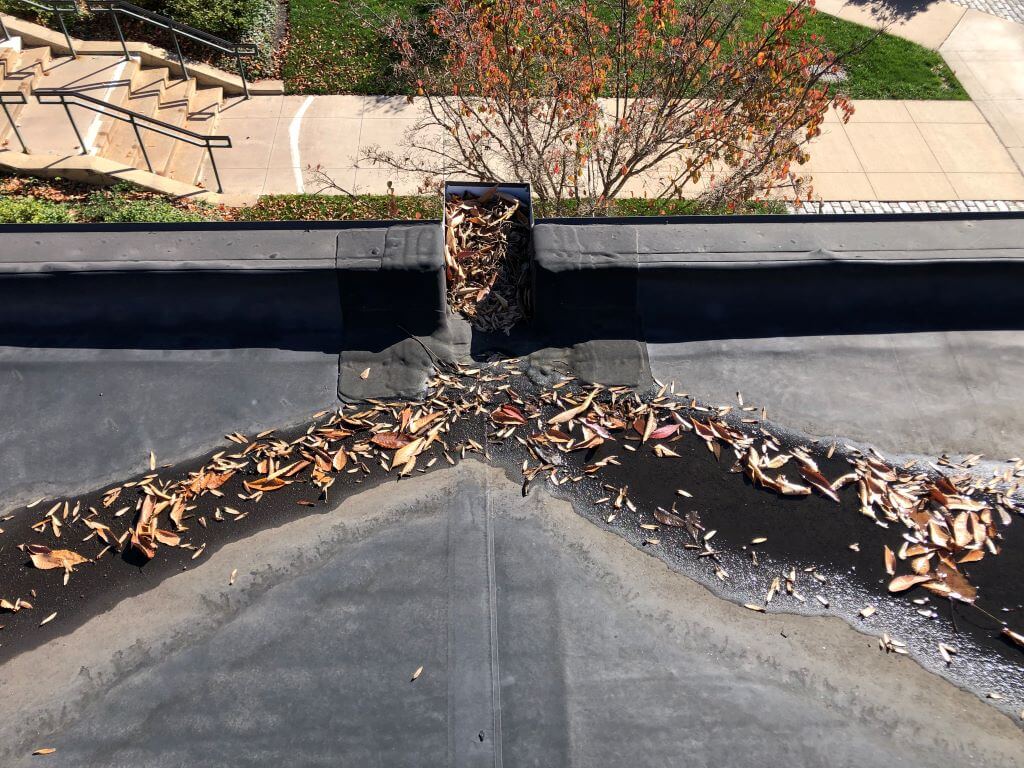
One potential pitfall of adding solar panels to a flat roof is that it makes maintenance more difficult and costly. There are several reasons for this.
Leaf and debris removal is a routine part of flat roof maintenance. It helps ensure proper water flow and drainage. Having to work around solar panels will slow this work.
Solar panels can sometimes also impede the flow of water, causing ponding, snow and ice accumulation, and poor drainage.
If damage occurs under a solar panel, the panel will likely have to be removed from the rooftop for repairs to take place. Even if the panels don’t have to be moved, they will be worked around and that will slow roof repairs. Additionally, you risk damaging the panels.
During this repair time, you should expect some downtime during which the solar panels will not be able to produce power.
Summary
There are a lot of questions that should be asked and answered when you are thinking about installing solar panels on your commercial or industrial flat roof. Like many other things in life, there are pros and cons. It is best to consult with a trusted solar panel installer, engineer, flat roof specialist, and accountant before you decide.

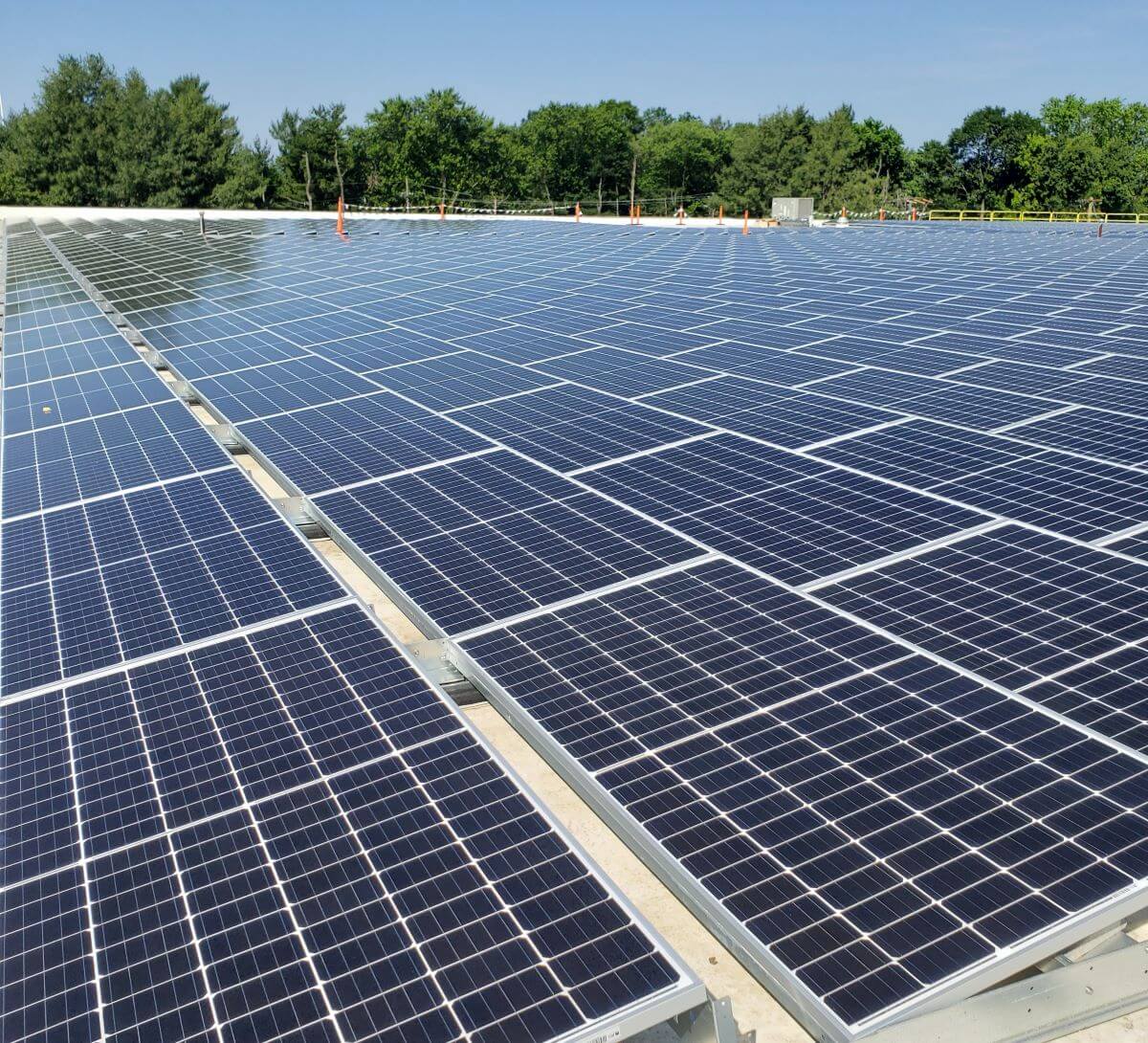
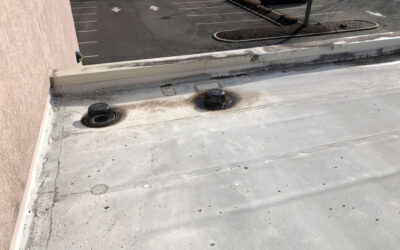

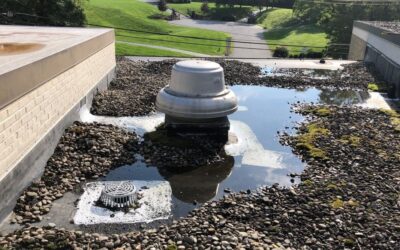
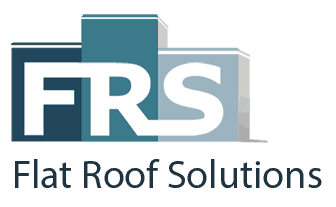
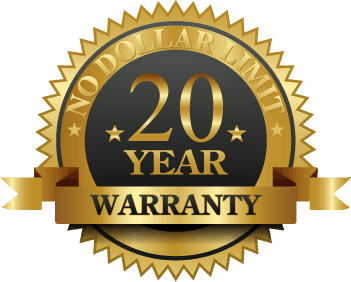

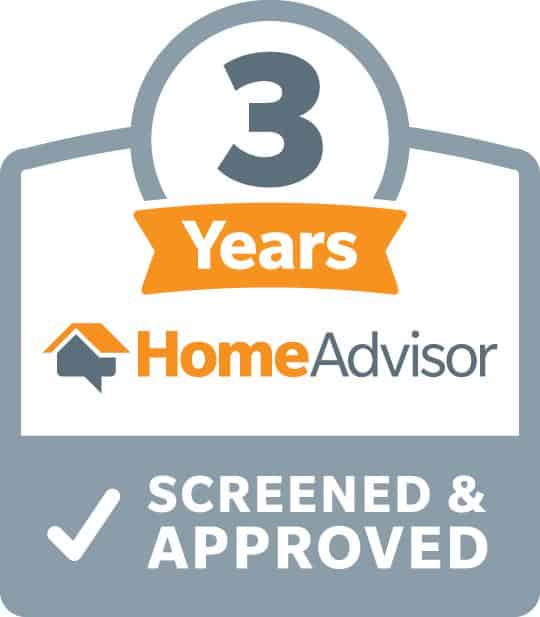
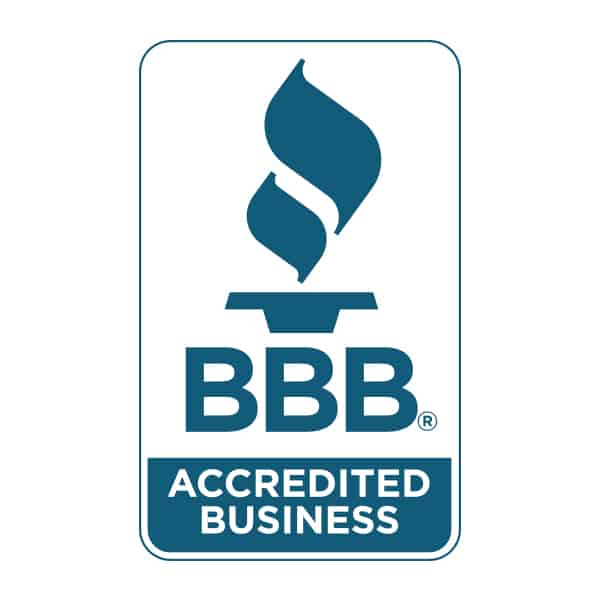

Add your first comment to this post